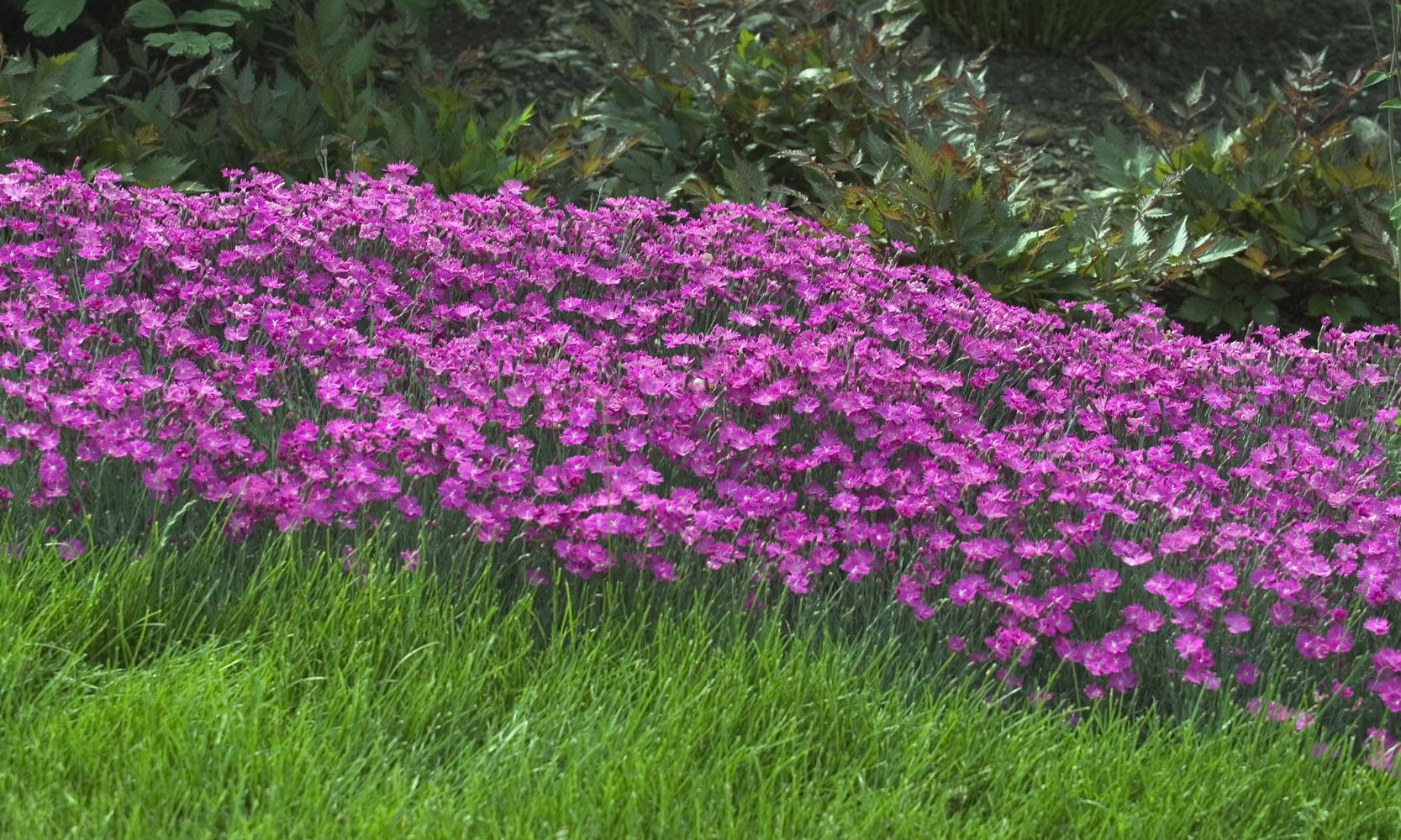Information Possibly Outdated
The information presented on this page was originally released on January 19, 2006. It may not be outdated, but please search our site for more current information. If you plan to quote or reference this information in a publication, please check with the Extension specialist or author before proceeding.
Firewitch named 2006 perennial of the year
By Norman Winter
MSU Horticulturist
Central Mississippi Research & Extension Center
If you love Bath's Pink dianthus, then you will be delighted with Firewitch, the 2006 Perennial Plant of the Year. The Perennial Plant Association has a strong reputation for selecting perennial plants that perform for the widest area of the United States, and this year's winner is no exception.
Firewitch is known botanically as Dianthus gratianopolitanus. The name Dianthus originates from the Greek dios and anthos, meaning the divine flower. It refers to the flower of a god, an indication of the esteem in which this flower has been held. The common name associated with this dianthus is cheddar pink.
The origin of the term “pink” or “pinks” is likely from the Dutch Pinkster or the German Pfingsten for Pentecost, the time of year during in which the plants bloom. Cheddar pinks are named for Cheddar Gorge in southwest England, one of the locations where they grow wild.
Firewitch, hardy in zones 3-9, is a low growing, mat-forming plant with narrow, bluish-gray foliage that remains evergreen. The foliage reaches 3 to 4 inches tall and forms a mature clump 6 to 12 inches wide. Brilliant purplish-pink flowers reach 6 to 8 inches high and cover the plant at bloom time.
The flower color has been variously described as hot pink or purple red or magenta, and the color combination of the foliage and flowers is striking at peak bloom in early spring. If that weren't enough, the flowers perfume the air with a spicy, clove-like fragrance. Firewitch is tops in offering a re-bloom throughout the season.
The cheddar pink is an evergreen perennial performing best in full sun in well-drained soils. The landscape possibilities are vast. It is excellent as a border edger, in a rock garden, planted in wall crevices, or as a ground cover on a sunny slope. It is at home in the herb garden, a formal border or a cottage garden.
I like it planted in a cottage garden with old garden roses. The color would look exceptional with a Lady Banks or perhaps Mermaid. It also works well in combination with azaleas like G.G. Gerbing, irises and the ox-eye daisy. The fragrant garden or the well-traveled walkway is another choice for this perennial with the clove-spiced fragrance.
To grow yours, select a site in full to part sun with well-drained soil. Plants placed in poorly drained soils will eventually deteriorate. It is reported to like a soil pH close to neutral, but so far it has performed similarly to Bath's Pink, leaving me to think soil pH is not as critical as good drainage.
After flowering in early spring, cut back the spent flowers to promote re-bloom later in the season. Firewitch doesn't spread as much as Bath's Pink, but you can achieve the same look with a little tighter spacing, such as 6 to 8 inches apart.
Like Path's Pink, Firewitch is easily propagated by dividing before or immediately after flowering. If you are looking for a groundcover, and especially one that blooms, then Firewitch is an outstanding choice. Look for Firewitch this spring as your local garden center brings in new perennials.



